Australian Tropical Rainforest Plants - Online edition
Syzygium puberulum Merr. & L.M.Perry
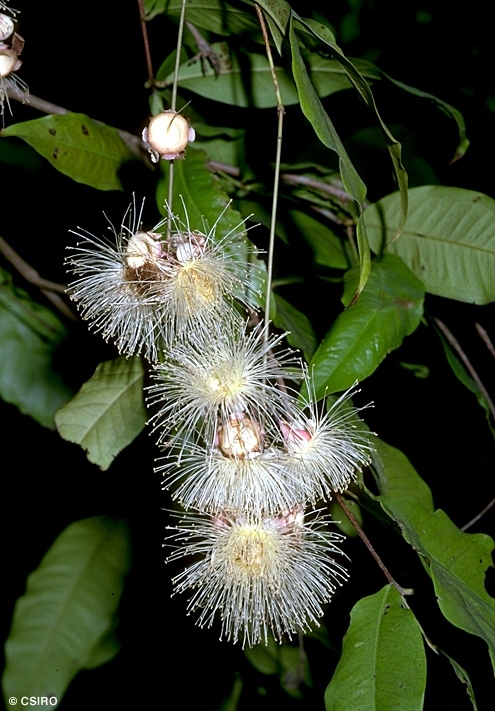
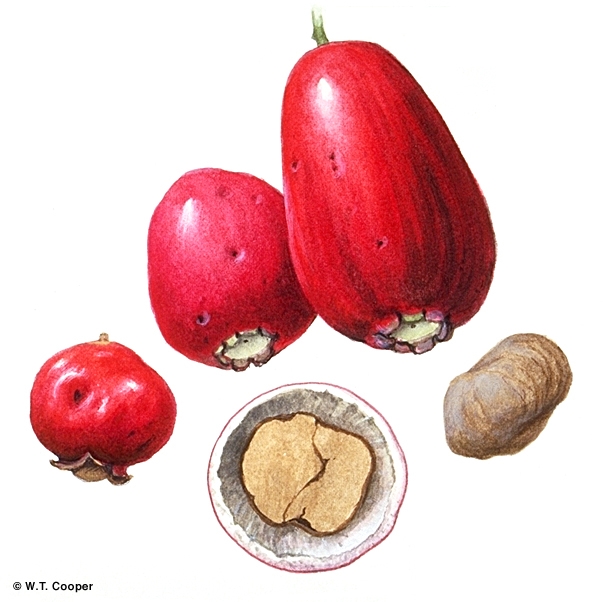
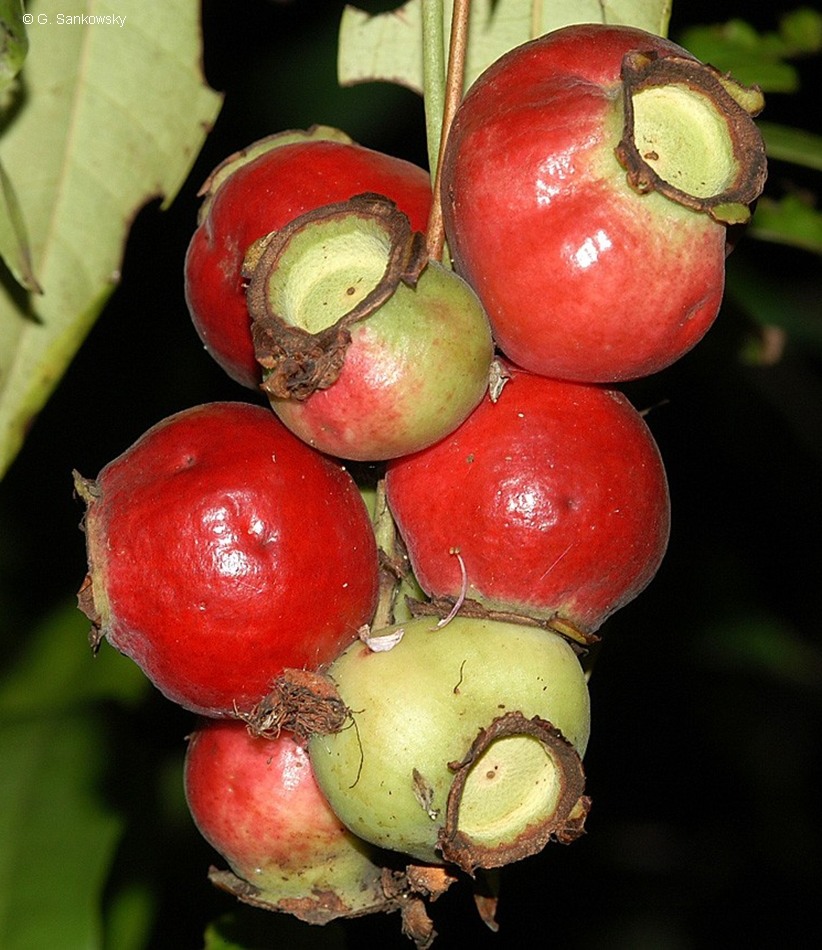
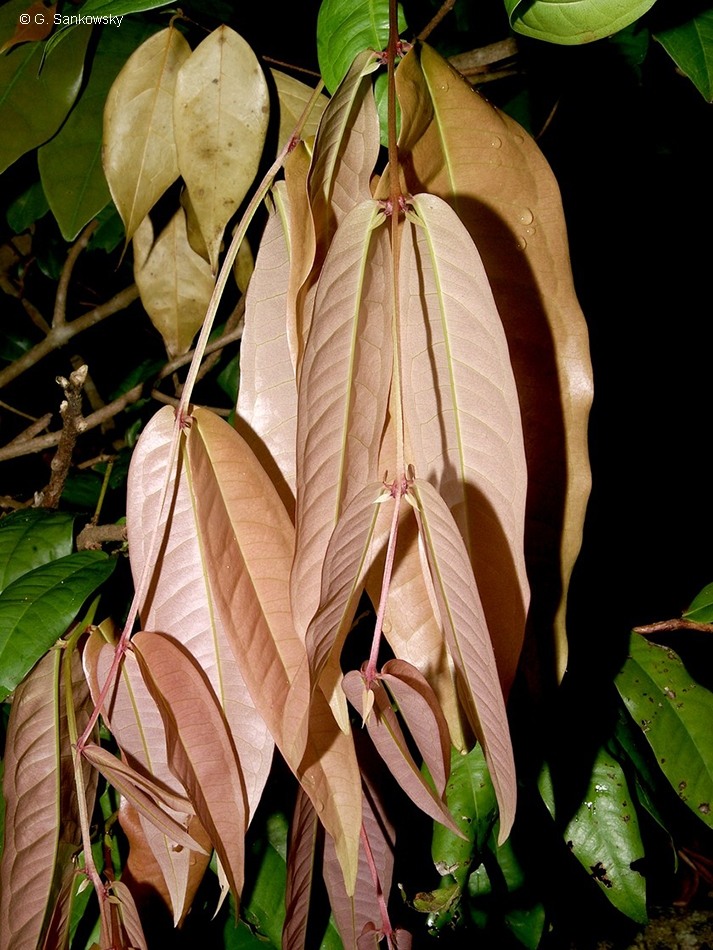

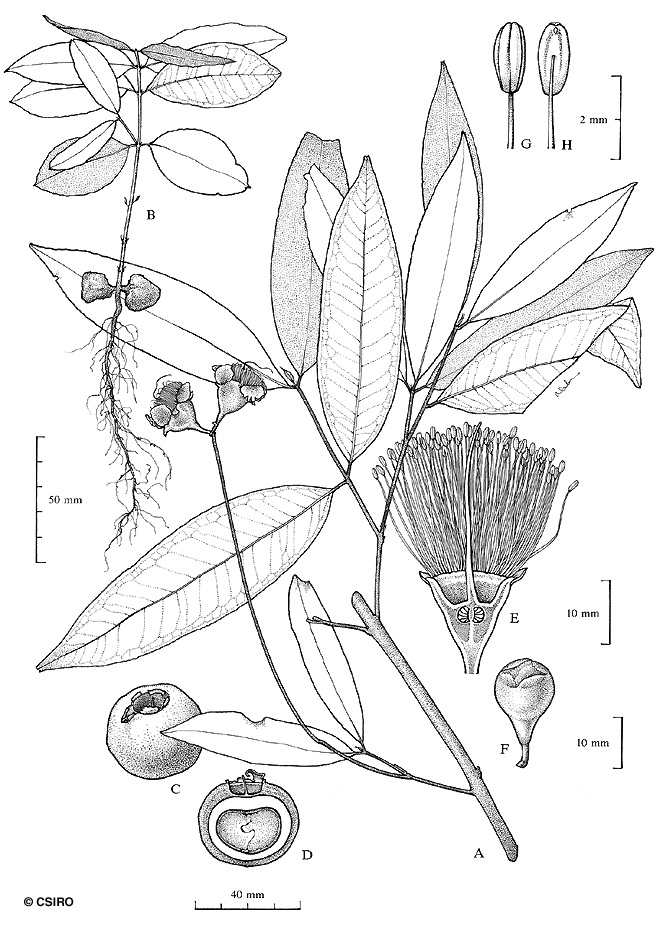
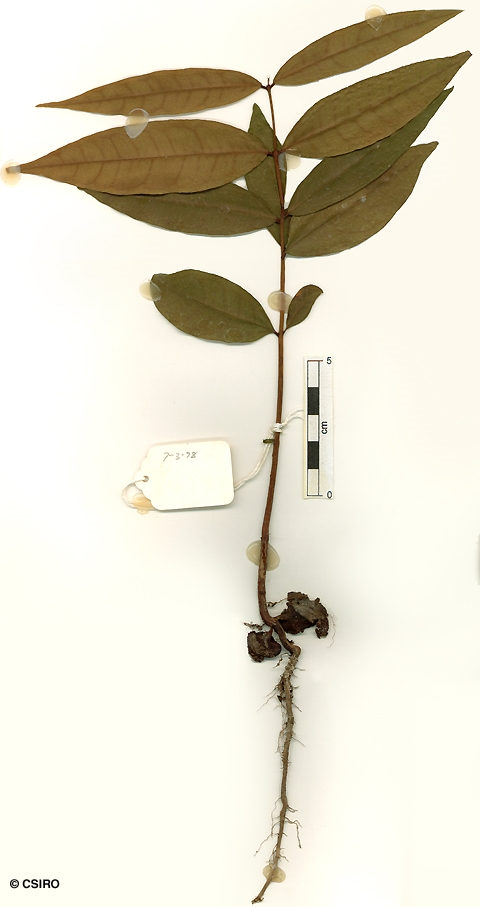
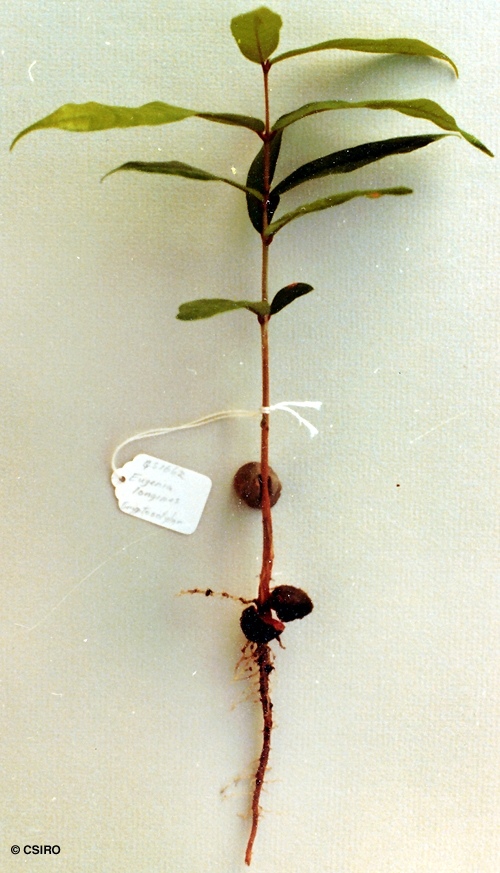
Merrill, E.D. & Perry, L.M. (1942) Journal of the Arnold Arboretum 23: 263. Type: BRITISH NEW GUINEA: Port Moresby, Brass 838 (TYPE), December 1925, gully rain-forests.
White Satinash; Satinash, Downy; Downy Satinash
Seldom exceeding 30 cm dbh. Adventitious roots often present around the base of the stem.
Inflorescence frequently 3-5 flowered on long (about 10 cm) peduncles, bracts deciduous, absent at anthesis. Calyx tube (hypanthium) + pedicel about 13-20 mm long, calyx tube (hypanthium) about 10-19 mm diam., minutely puberulous, calyx lobes rounded, slightly dimorphic, about 2-3 mm long, horizontal to slightly reflexed at anthesis. Petals +/- orbicular or rounded, about 8-10 mm diam., oil dots visible, more than 200 visible on the outside of each petal, fewer on the inside. Outer staminal filaments about 20-30 mm long, anthers about 1.4-1.8 x 0.7-0.8 mm, gland terminal, on the back of the anther. Ovules about 45-65 per locule, placentas central, ovules radiating, ascending. Style about 28-45 mm long, frequently exceeding the stamens.
Fruits on long peduncles, globular, depressed globular or ovoid, excavated at the apex, sometimes slightly 2-4 lobed, about 30-50 x 30-45 mm, calyx lobes persistent, about 2-3 mm long. Seed sometimes solitary, but sometimes up to five per fruit, solitary seeds attaining about 30 mm diam. or more. Testa free from the succulent pericarp but adhering closely to the rugose surface of the petiolate cotyledons. Testa outer surface resembling that of blotting paper. Cotyledons uniformly textured, except for the peripheral layer. Radicle lateral, cotyledonary stipules present.
Occurs in CYP. Altitudinal range from sea level to 160 m. Grows as an understory tree and is usually found in gallery forest. Also occurs in New Guinea.
An interesting small tree suitable for smaller gardens, has weeping habit and pendulous racemes of cream flowers and red fruits.
This species has no commercial value as it never grows large enough to produce millable logs. Wood specific gravity 0.81. The fruit is reported to be edible but is of no commercial interest. Hyland (1983).





